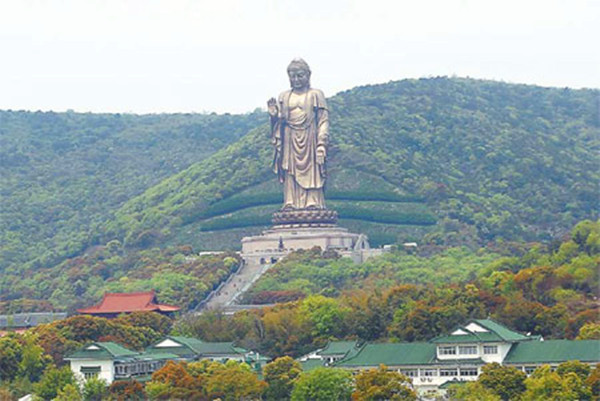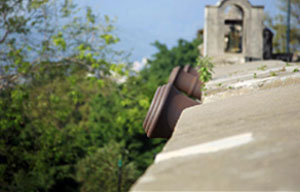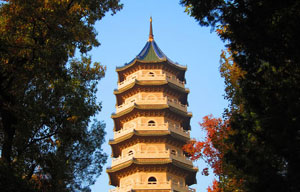Buddhist site blends recreation, education and spiritual tranquility
 |
|
In Lingshan, religion, leisure and ecology co-exist with harmony. |
It is a monastery. It is a theme park. It is the biggest tourist attraction in Jiangsu province in terms of revenue, testifying to its immense popularity.
Unlike other Buddhist sites throughout China, Lingshan has the best of both old and new. The giant Buddha was unveiled in 1997, but the site comes with a wonderful origin story that dates back 1,300 years. The icons are immersed in history, but technologies have showered them in a new glow.
During the Tang Dynasty (AD 618-907), there was a temple at this location on the northern shore of the Taihu Lake, also known as Lake Tai. A renowned monk named Xuanzang paid a visit. (For those into Chinese legends, that is the same monk who led the Monkey King on a journey to the west, spawning endless tales of fantasy.) He said the hill nearby resembled one in India that the Chinese call Lingjiu Mountain, hence naming it Little Lingshan. Like almost all ancient structures, the Lingshan temple was destroyed and rebuilt several times. By the 1990s, a new blueprint was laid out to erect an 88-meter Buddha on the side of the hill.
As such, it becomes the tallest Buddha statue in East China, creating a perfect balance with the Leshan Buddha in West China, the Hong Kong statue in southern China, the one in the Yungang Grottoes in North China, and the one in the Longmen Grottoes in Central China.
The Lingshan Buddha is visible when you drive from downtown Wuxi. It is nestled between three peaks and has the mystique of appearing and disappearing when you snake through the mountain path. Even before you enter the main entrance, it looms larger and larger, giving the false impression it is taller than the hill behind it.
"Lingjiu Mountain in India, once a Buddhist mecca, is now wilderness," said Zhao Puchu, the religious leader who pushed for the Lingshan project. "Here in Lingshan, everything is vibrant."
Nothing speaks vibrancy better than the throngs that circle the bronze of the Buddha hand, a same-size replica of the hand on the 88-meter statue, and another one of the potbellied and happy-faced Maitreya Buddha with dozens of kids frolicking all over his body, which flank the main passageway. Unlike the giant Buddha, these are so accessible that the traces of millions of people touching them have formed a ribbon of discoloring.
The birth of Buddha is a high-tech feat. Nine dragons shoot cannons of water onto a lotus statue perched atop a pillar sitting in the center of a pond. The lotus opens its petals, revealing a baby who turns clockwise, accompanied by the recording of a symphonic orchestra and a chorus. This Buddhist version of the baby shower is performed four times daily, re-creating details from the creation myth.

All attractions on the premise are steeped in religious tales and history. But you don't have to be a Buddhist scholar to enjoy this place. For example, all three major branches of Buddhism are represented, but not with equal emphasis. Theravada, popular in Southeast Asia, has a movie-set-style architecture in the park, where you can take photos from the exterior but not enter the interior. Vajrayana, or Tibetan Buddhism, is epitomized by a scaled-down Potala Palace, where you can ascend to the top floor and watch the birth-of-baby-Buddha show from a unique perspective.
Because the park is in coastal China, the Mahayana branch of Buddhism is naturally the focal point. The mammoth palace, 72,000 square meters in size, offers an experience unrivaled by any temple or monastery in the nation. Its opulence may take your breath away. First of all, you'll have to put on a pair of shoe covers, something you usually do while visiting demo units of new housing developments.
Not far from the translucent hall is a 1,500-seat theater with a unique stage configuration. In the center, right below the 30-meter dome, is a lotus pond with electronically controlled objects. A circular stage line up the wall, complete with a water curtain, on which chapters from the Buddhist history are re-enacted, reminding me of Stan Lai's eight-hour epic play A Dream Like a Dream with its Buddhist overtones and similar stage designs.


















